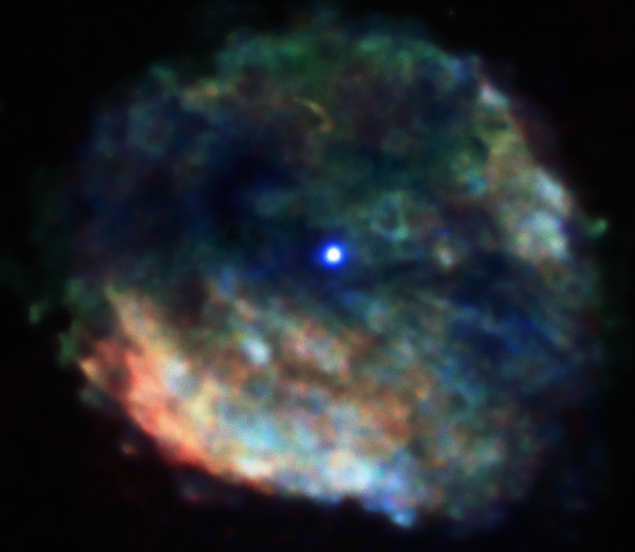
 Credit: NASA/CXC/Penn State/G.Garmire et al.
Credit: NASA/CXC/Penn State/G.Garmire et al.
Slowly I Turn
Supernovae explosions leave behind compact stellar corpses (neutron stars or black holes) and extended hot supernova remnants. In the celestial realm, evolution continues even in death. Remnants and neutron stars cool and fade away. Neutron stars, born spinning, can gobble up surrounding matter, swallowing not just mass but angular momentum, spinning faster as time goes by; or grow tired, slowing down with time. Astronomers believe they largely understand this process of stellar life after death. But X-ray observations of the supernova remnant RCW 103 (shown above in a color image taken by the Chandra X-ray Observatory) are a bit of a puzzle. This remnant harbors an X-ray bright neutron star at its center, as shown above. X-ray variations from this neutron star indicate that it rotates only once every 6.67 hours. Most compact objects have periods of seconds or less, so the relatively glacial rotation of this neutron star is a mystery. Why is it spinning so slowly? Astronomers conjecture that perhaps this neutron star has an unseen companion which might be transferring part of its own atmosphere onto the surface of the neutron star; the entanglement of the neutron star's magnetic field with that of the companion might have helped slow down the neutron star's spin.
<
HEA Dictionary ● Archive
● Search HEAPOW
● Other Languages
● HEAPOW on Facebook
● Download all Images
● Education ● HEAD
>
Each week the HEASARC
brings you new, exciting and beautiful images from X-ray and Gamma ray
astronomy. Check back each week and be sure to check out the HEAPOW archive!
Page Author: Dr. Michael F. Corcoran
Last modified Monday, 26-Feb-2024 17:46:37 EST


